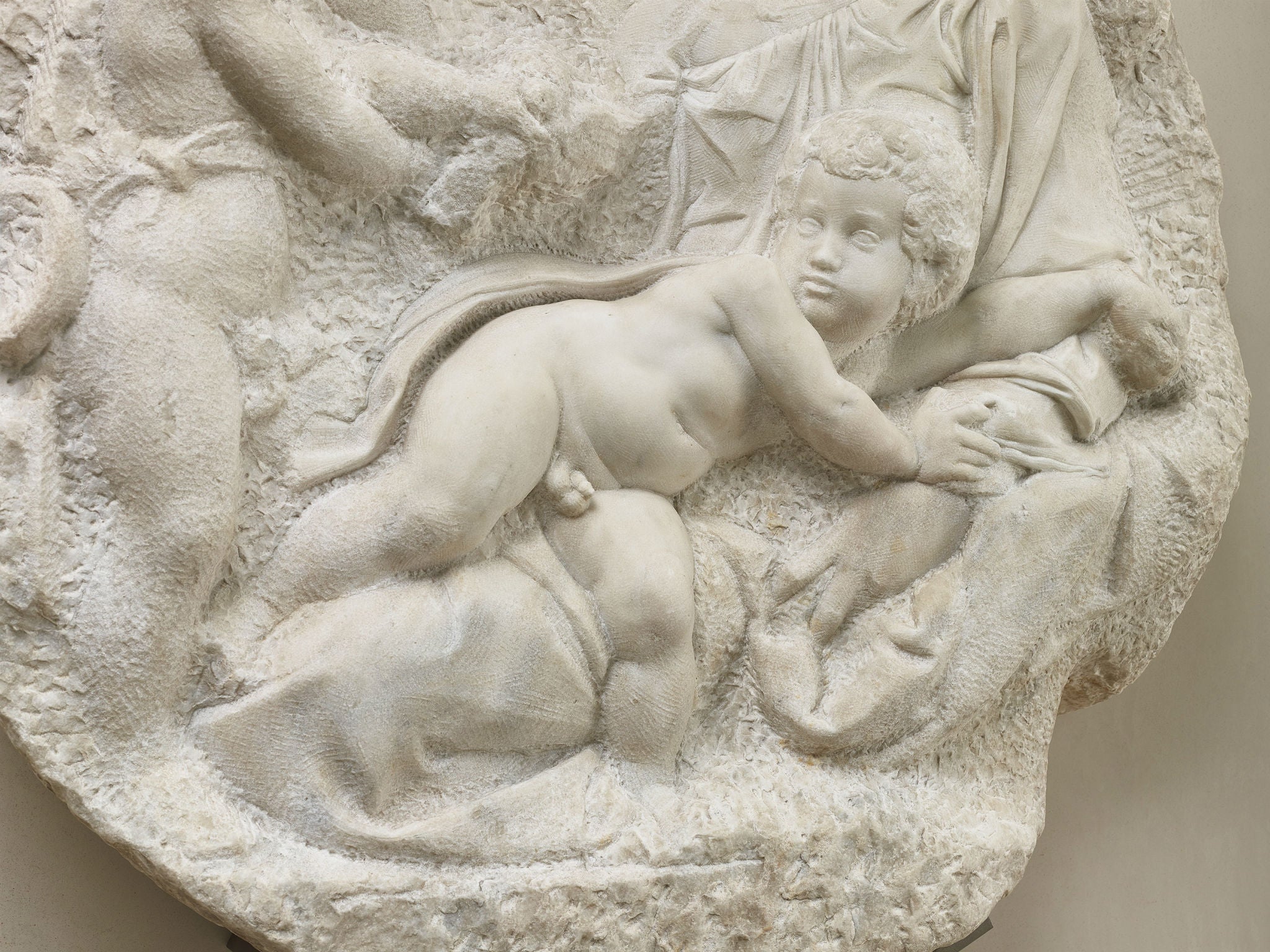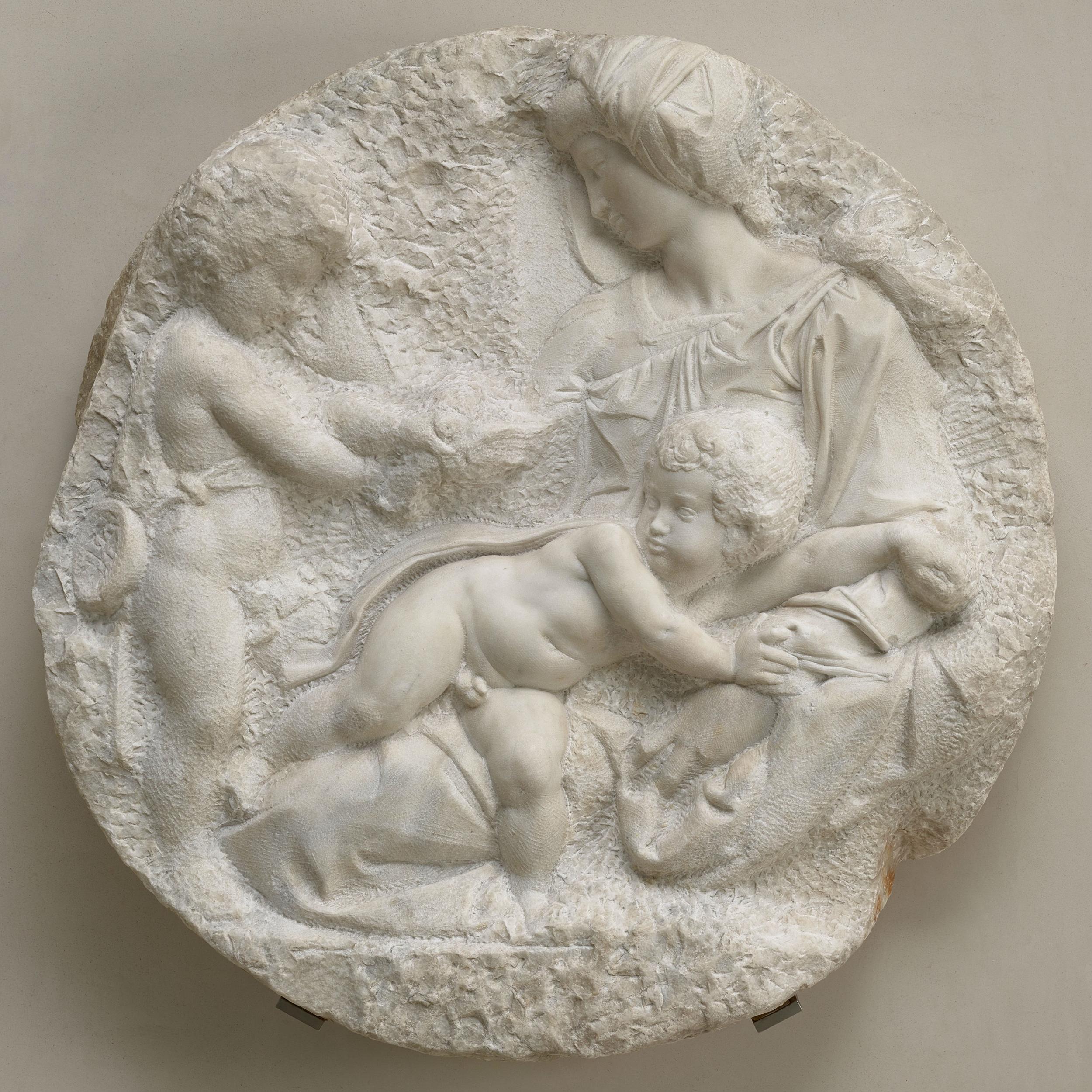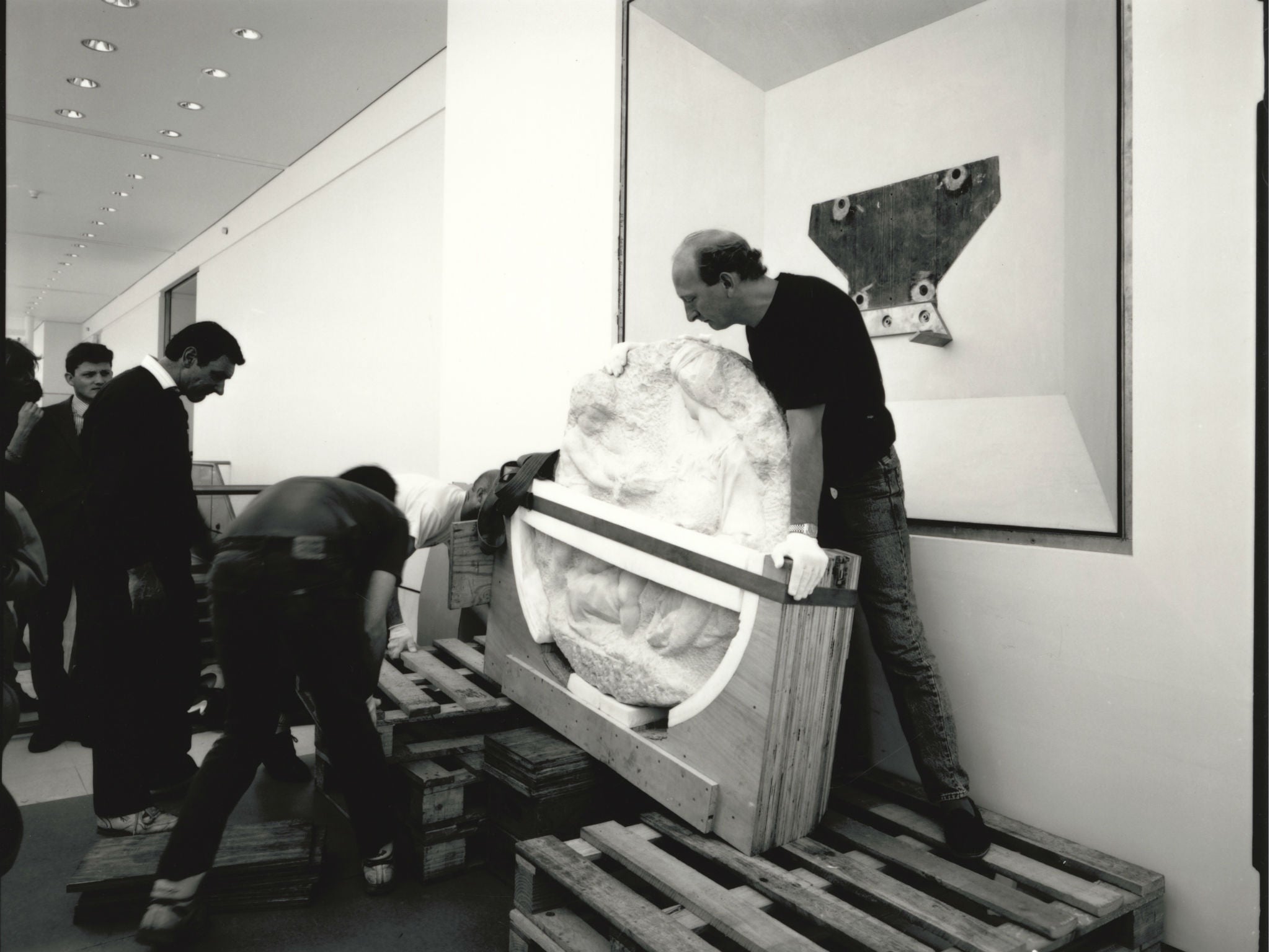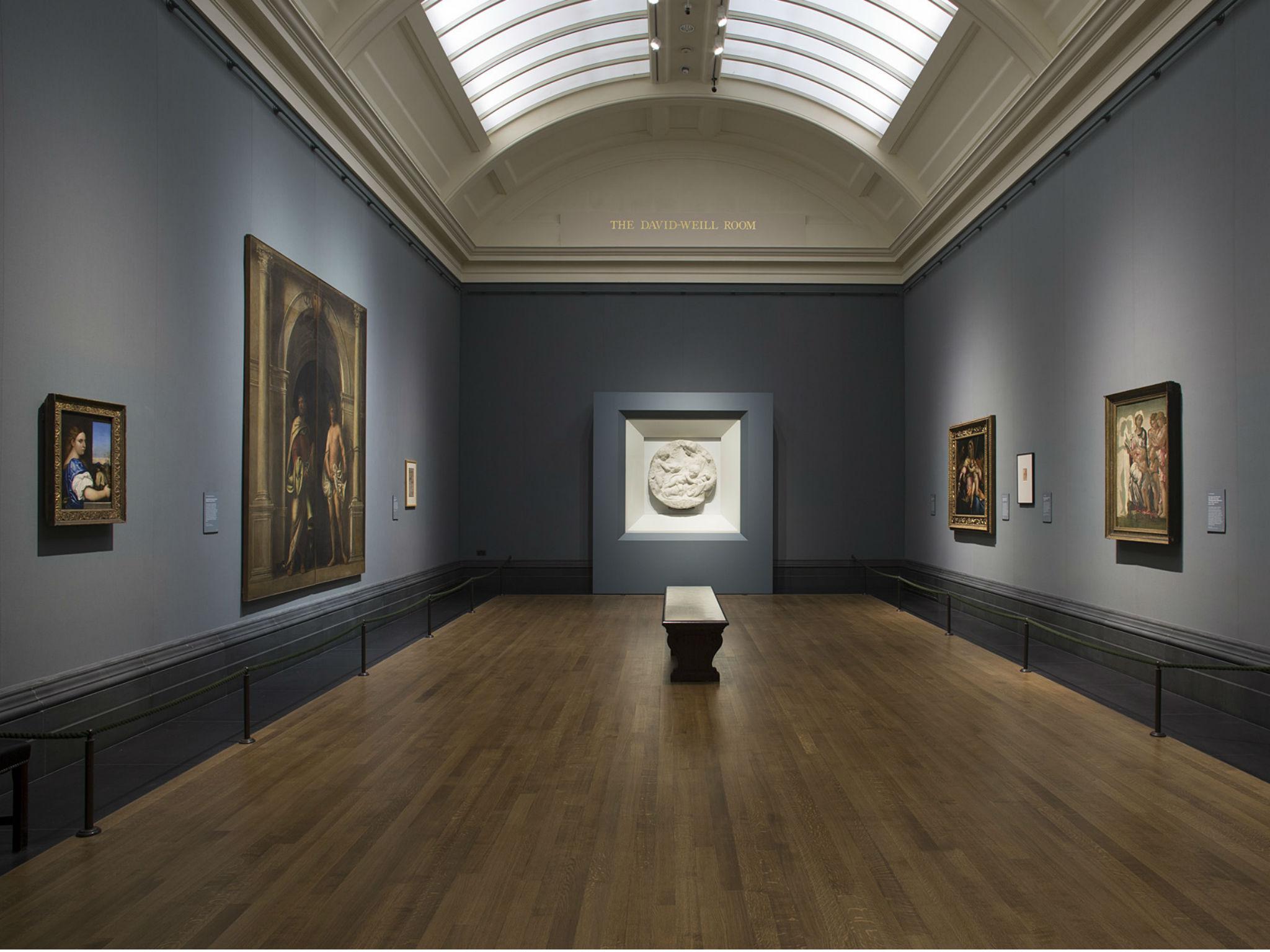How Michelangelo's Taddei tondo got to Britain: Sir George Beaumont shelled out £1,500 for it
Tracing the journey of the only marble by Michelangelo in Britain, which is a star attraction at the National Gallery's Michelangelo & Sebastiano show and is usually hidden away in a bulletproof box in a quiet corner of the Royal Academy's Sackler Landing

Your support helps us to tell the story
From reproductive rights to climate change to Big Tech, The Independent is on the ground when the story is developing. Whether it's investigating the financials of Elon Musk's pro-Trump PAC or producing our latest documentary, 'The A Word', which shines a light on the American women fighting for reproductive rights, we know how important it is to parse out the facts from the messaging.
At such a critical moment in US history, we need reporters on the ground. Your donation allows us to keep sending journalists to speak to both sides of the story.
The Independent is trusted by Americans across the entire political spectrum. And unlike many other quality news outlets, we choose not to lock Americans out of our reporting and analysis with paywalls. We believe quality journalism should be available to everyone, paid for by those who can afford it.
Your support makes all the difference.For many visitors, Michelangelo’s Taddei tondo – one of the star exhibits of the National Gallery’s Michelangelo & Sebastiano show in London – will be a revelation. For me, this exceptional loan from the Royal Academy’s permanent collection provides a chance to share, and shed light on, a major work by this towering Renaissance genius, which I have long had a passion for, and which is the focus of my new book on the subject.
Michelangelo’s unusually large sculpted “tondo” (a type of image named after its rotondo, round, shape), depicts the Virgin and Child and the infant St John in a rocky landscape. It is hewn from a sparkling lump of Carrara marble, and is tantalisingly unfinished, allowing us the dramatic sensation of almost looking over Michelangelo’s shoulder as he carved the relief and brought it to various stages of completion.
The narrative, too, is unusually alive for such a gentle theme: the toddler St John – a shadowy, dynamic figure – holds out a fluttering bird, which startles the Christ child as he rests on his mother’s lap. Christ seems torn between his natural impulse to flinch and even fly away (in fact, he almost propels himself out of the sculptural space) and being drawn irresistibly towards John’s clumsy offering.
The bird, variously identified as a dove or a goldfinch, is usually interpreted as a symbol of Christ’s Passion or redemptive role. The Virgin, a beautiful and remote figure in gentle profile, appears at that very moment to forsee her child’s momentous destiny, as it were, step by step. The figures are arrested, caught in this poignant instant, and yet at the same time the boldness and virtuosity of Michelangelo’s attack makes the composition crackle with energy and possibility (visible in the flurry of chisel marks and his audacious working of the stone).

For those in the know, all these facets of the tondo have been free to enjoy in a quiet corner of the Sackler Landing (on the upper floor of the Royal Academy). The relief has been exhibited there since the early 1990s, set back into the wall in a specially designed niche, behind a greenish bulletproof glass that has done it little favours. Discreetly billed as the only Michelangelo marble in Britain, it has been part of the academy’s collection since 1830. The fact that such a treasure was hidden, as it were, in plain sight, was one of the things that motivated me to write about it: to try to bring it plainly into view. I was also intrigued as to how one of Michelangelo’s great marbles ended up on these shores?
The story of its arrival at the academy rests with the fortunes of one man: the connoisseur, collector and amateur landscape painter Sir George Beaumont, an arbiter of taste who exhibited his efforts at the Royal Academy for many years, and who was a supporter of both the painter John Constable and the poet William Wordsworth. According to Constable, Michelangelo’s Taddei tondo “was entirely lost, till accident discovered the one in question in the year 1822, at which time George Beaumont was in Rome”. There, through the efforts of the Italian sculptor Antonio Canova – who negotiated the purchase on his friend’s behalf – Beaumont bagged the hefty marble. Canova even supervised its packing so that it could be safely shipped back to England.

Beaumont bought the tondo from the distinguished French artist Jean-Baptiste Wicar, who had already made a name for himself as a great collector of Michelangelo drawings. A hitherto unpublished document in the Royal Academy archive (two pages of notes in French), probably served as sales notes of sorts to verify the authenticity of the work, and to give Beaumont the comfort he needed to shell out £1,500.
The French notes tell us that Wicar himself acquired the tondo from the palace of Taddeo Taddei – the “Florentine gentleman” who originally acquired the tondo directly from Michelangelo in about 1505. Taddeo, then a wealthy young cloth merchant and generous supporter of the arts, was part of a new generation of connoisseurs and patrons in Florence who collected works of the avant-garde. He proudly displayed his new Michelangelo, with its innovative take on the Madonna and child theme, in his palace – even though the sculpture was unfinished in a conventional sense (as, indeed, a remarkable proportion of Michelangelo’s great marbles reliefs and statues are). While it hung in Taddeo’s palace, his protégé – the precocious young Umbrian artist Raphael, who intermittently stayed there – eagerly made sketches of it.
According to the notes, Wicar himself acquired the tondo in 1812. Having forged a successful career as a neoclassical artist in revolutionary France, Wicar had been appointed the leading member of Napoleon’s Commission des Sciences et des Arts, charged, during the French occupation of Italy, with the systematic expropriation of works of art for France’s national museum collections. As a result, Wicar had gained remarkable access to all the palaces and private collections in Florence, and clearly took advantage of it.
He continued to add to his incredible collection of Michelangelo drawings and it may be that the tondo, which has been described as a “sketch in stone”, fell into his hands as a result. Beaumont was under no illusion about the type of vendor he was dealing with, writing in a letter of 1822, that “all the treasures of Italy were at one time at [Wicar’s] command”.
Back in England, and freshly installed in Beaumont’s London bolthole at 34 Grosvenor Square, the tondo – as the RA’s David Wilkie relates – became the “chief talk of all the artists”: a renowned female sculptor, he jokes, even “had to be restrained from finishing it”. Beaumont, who had recently been in poor health, was fired up by his purchase and exhilarated by his recent experience of “fair Italy ... in all her splendour”.
Having visited the Vatican and the Capitoline Museums in Rome, where some of the greatest works of mankind were all accessible to the general public, he determined to redouble his efforts to promote “good’ taste and model public outreach” in England. He campaigned vigorously for the creation of a National Gallery, where great works of art should be “not merely toys for connoisseurs, but solid objects of concern for the nation” and, in 1823, promised his collection of old masters to the nation, on condition that a suitable place be found for their display. This led directly to the establishment of the National Gallery in 1824.

Beaumont also specified that his great tondo should be left to the Royal Academy – which acquired it in 1830, following his death in 1827. Beaumont’s explicit intention was that every artist should have free access to it, so that progress in the arts could be promoted. While some of the greatest arts academies in Europe boasted plaster casts of the tondo, Beaumont – like his great idol, Sir Joshua Reynolds, the first president of the Royal Academy – believed that artists should have access to “authentick” models, rather than copies. Michelangelo’s great tondo, of course, is especially illuminating for artists, as it lays bare his whole process from beginning to end.
The tondo was delivered to the Royal Academy in the summer of 1830 at the cost of a £1. Constable sketched it almost as soon as it arrived, describing it as “one of the most beautiful works in existence”. For many, its mysterious play of light and shadow makes it one of Michelangelo’s most painterly works – demonstrating not only his rivalry with his older contemporary Leonardo da Vinci (the two had a complete antipathy to one another) but also the psychological intensity of Michelangelo’s own response to the mother and child theme.
The Taddei tondo can now be enjoyed at the National Gallery until June 2017, and it will be part of a major redisplay of the collection when the Royal Academy celebrates its 250th anniversary and redeveloped exhibition spaces in 2018.
Alison Cole is the author of 'Michelangelo: The Taddei Tondo' (Royal Academy Publications)
Join our commenting forum
Join thought-provoking conversations, follow other Independent readers and see their replies
Comments